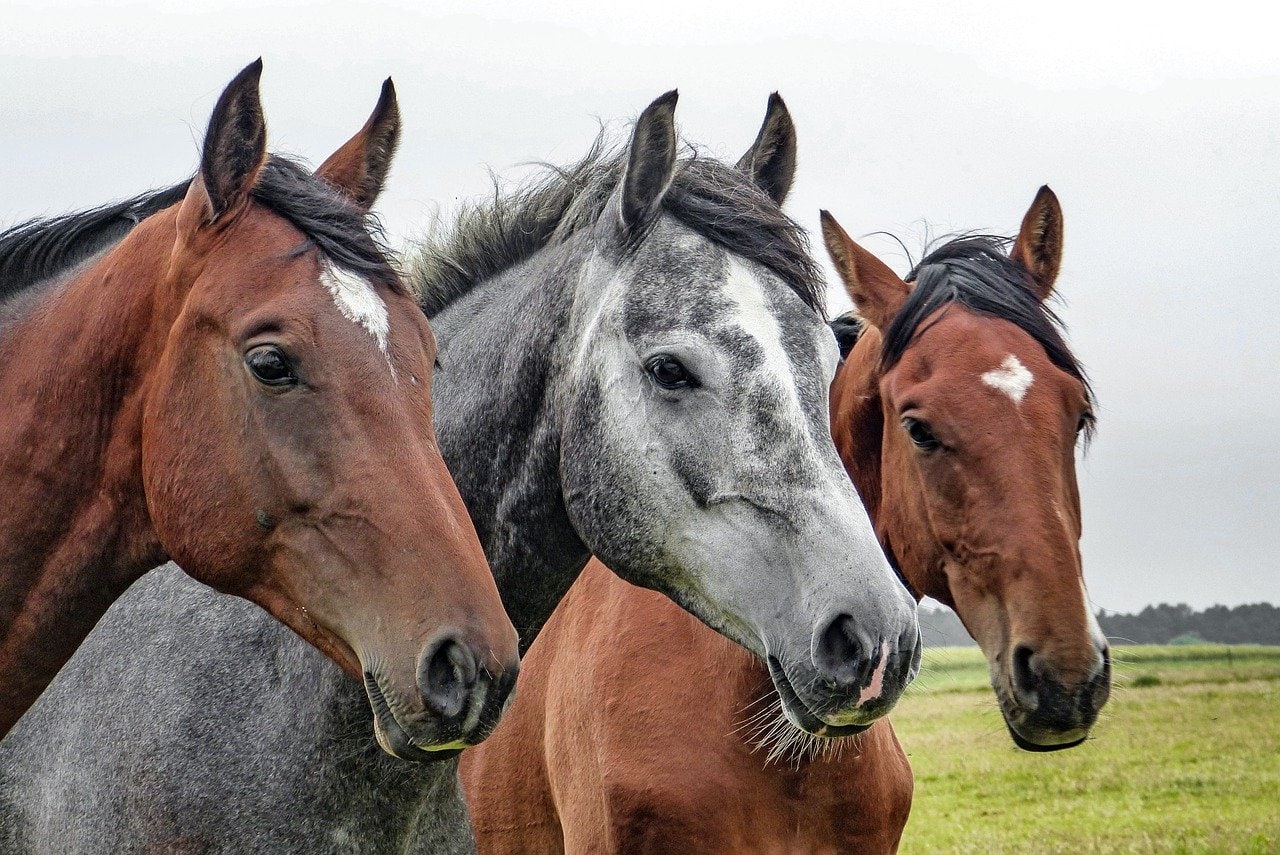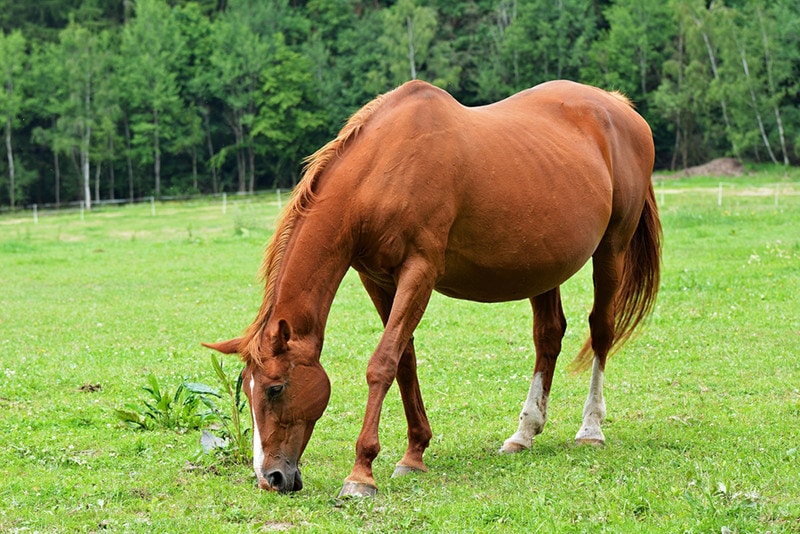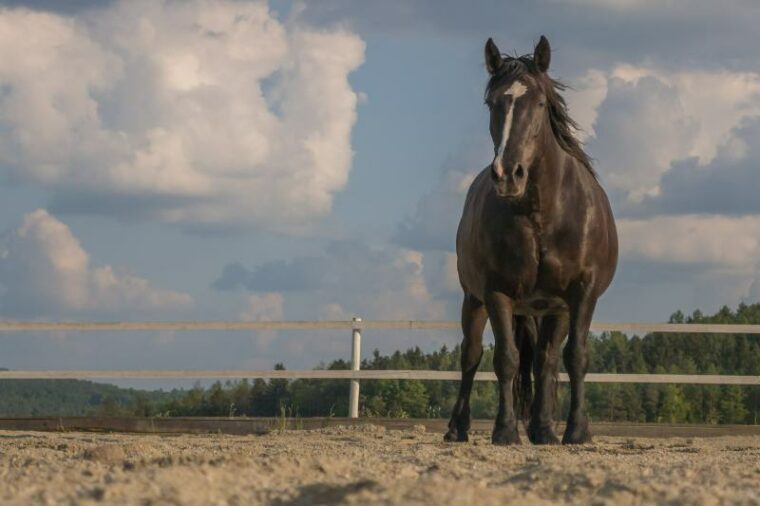
Click to Skip Ahead
The Noriker horse is a rare Austrian draft breed that’s been around for thousands of years. It played an important role in transporting goods throughout the Alps, but its numbers have decreased drastically over time. These horses have much to offer farmers, families, and foresters alike. If you’re considering investing in a Noriker, read on to learn about its traits, origins, and temperament.
| Care Level: | Moderate |
| Temperature: | All climates |
| Temperament: | Calm, nimble, agile, adaptive, gentle |
| Colors: | Black, bay, chestnut, leopard-spotted, blue roan, tobiano |
| Lifespan: | 25–30 years |
| Weight: | 1,540 lbs (stallion), 1,450 lbs (mare) |
| Height: | 15.2–16.2 hands (stallion), 14.9–15.9 hands (mare) |
These impressive mountain horses are well-suited for many different situations, which may be why they’re so revered today. They are highly agile, graceful, and even-tempered. They are also popular among riders because they’re reliable and well-balanced.
Noriker Horse Breed Characteristics
What Are These Horses Used For?
The Noriker draft horse is a medium-heavy mountain animal known for its sure-footedness and hardiness. These cold-blooded horses are born and bred for strength and endurance, so they excel at draft work and pulling carriages.
Modern-day Norikers are used in the forestry industry and for farm work. They can often be found driving carriages, trail riding, or being ridden by their owners. In addition, foresters and loggers will often use Norikers as a workhorse throughout the Alpine forests.
This breed is favored for sports like sleigh racing because of its size, strength, and reliability. Though they’ve emerged as fabulous sport horses, a Noriker is well-suited for families with children as they’re easy to handle.

Where Did These Horses Originate From?
The Noriker horse is an ancient breed that developed over 2,000 years ago. When the Romans founded the province of Noricum in modern-day Austria, they introduced their heavy draft horses to the Alpine region. These Roman horses were eventually bred with the local Celt horses, resulting in a new breed known as the Noric horse or Noriker.
The first Noriker stud farm was founded in 1576 on a farm that the archbishops of Salzburg watched over. The farm leaders encouraged the breeding of draft horses in unusual colors and patterns. They especially prized the unique coloring of the Noriker breed, using them as ceremonial and parade horses.
Noriker horses acted as an important link between the trade of central Europe and the Adriatic until the end of the 19th century. They were used to transport goods like salt, gold, and iron in the alpine terrain of the Austrian mountains.
Norikers were eventually put to work on farms during the industrialization period of the 20th century. But their numbers declined significantly when machines replaced horses for transportation and farm work.
Temperament & Intelligence of the Noriker Horse
Much of their personality revolves around the fact that the Noriker was bred for hard draft work in rugged terrain. They’re resilient, courageous, and full of stamina, which proved useful for the breed as it needed to survive in harsh alpine environments.
Norikers have docile, willing temperaments and do well outside year-round. They’re calm, sensible, and genuinely love training and working.
Appearance & Varieties
Five sire lines influence the development of the Noriker breed. Each bloodline will produce a slight difference in appearance and temperament.
The Vulkan-Line is the most popular, with over 50% of all live Noriker horses belonging to this line. This line is so dominant because its founder stallions and others in its lineage were the heavy draft horses favored when the line was established.
The Nero-Line is the second biggest line and has such a huge influence because its founding stallions represented the preferred heavy draft horses.
The Diamant-Line started strong in the early 20th century, but the Nero-line surpassed it in the 1950s. Diamant-Line horses are athletic and agile, though only a few Norikers of this line exist today.
The Schaunitz-Line were known for their lively temperaments and durable build. Unfortunately, the original horses of this line tended to be difficult, so their numbers declined much in the 1980s. The Schaunitz-Line Norikers of today are smaller, with good movement and pleasing conformation.
Finally, the Elmar-Line consists mostly of leopard-spotted Norikers. Horses of this line are squarer, lighter, and smaller than those from other lines.
There’s also a smaller sub-type of Noriker horse known as the Abtenauer. Abtenauers originated in Austria, though they tend to be smaller than Norikers. These horses do not carry the leopard-spotting gene of the Noriker, so they’re only found in colors like blue roan, black, and chestnut.
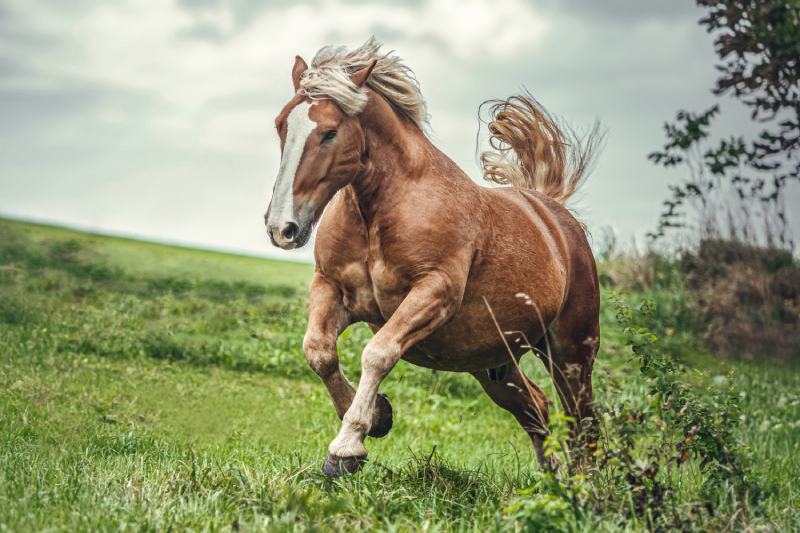
Things to Know When Owning a Noriker Horse:
Habitat & Stable Requirements 🌾
Norikers are quite big, so you’ll need a larger stall, at least 16 feet per side if you’re keeping it indoors. Sixteen feet is the bare minimum, with most owners offering 24′ x 24′ stalls. The more space you can provide your horse, the better.
It can do well outdoors, but you’ll need a fenced-in field and plenty of shelter from the elements.
To ensure your Noriker has enough space to gallop around, its paddock should be, at minimum, 30′ x 100′.
Food & Diet Requirements 🥕
Noriker horses need a diet of high-quality roughage, like alfalfa hay or grass. Those that are particularly active may also benefit from grains to boost their caloric intake. Mature draft horses should generally eat 1.5% of their body weight in forage, with a total caloric intake between 1.5% and 3% of their body weight. A horse working three hours daily will need between 15 to 20 pounds of hay and three to eight pounds of grain daily. An idle Noriker horse can be maintained on a forage-only diet, though it will not contain all the nutrients your horse needs to thrive. In this situation, your vet may recommend a vitamin supplement to ensure your pet is getting its nutritional needs met.
Obesity can be an issue for draft horses, so every effort should be made to ensure your horse maintains a healthy body weight.
Exercise 🐎
Draft horses like the Noriker are often happiest when they’re active. Your horse must get plenty of opportunities for exercise daily. Exactly how much activity will depend on your horse’s age, intended use, and overall wellness.
The versatility of the Noriker horse means that it thrives when riding, driving, or working. If you are using your horse primarily for recreational riding or light work, aim to offer 30-minute to 1-hour exercise sessions practicing his walking and trotting. If your Noriker performs more demanding work, such as sleigh racing or competition pulling, he’ll need more frequent and longer training sessions. Unless you’re very experienced, we recommend consulting with a professional to work out a training regimen that suits your horse’s fitness level, age, and intended use.
Regardless of your Noriker’s jobs, providing a spacious paddock or pasture for your horse is recommended. Open spaces allow him to move freely and engage in his natural behaviors.
Training 🐴
Noriker horses are very trainable, but it requires much knowledge and skill. You’ll need to be patient and consistent, as this breed is known for its sensitivity. They do not respond well to punishments and do their best in training regimens with positive reinforcement.
Grooming 🧽
Grooming is an essential part of horse ownership. It increases blood circulation to the skin, releasing oils that will then add luster to your horse’s coat. It’s important to know that a healthy and shiny coat doesn’t develop overnight or without work. Daily grooming is required, but the payoff is worth it.
Many draft horses can work without shoes, but if you need some for your Noriker, don’t be surprised if your farrier charges double the price. Shoes for a Noriker require extra labor and specialized equipment, hence the higher price tag.
Lifespan & Health Conditions 🏥
While the Noriker is a generally hardy horse, testing them for Type 1 Polysaccharide Storage Myopathy (PSSM1) may be worthwhile. This condition causes the body’s muscle cells to produce glycogen continuously. Typical signs include muscle soreness and weakness.
Noriker horses may also be at risk of developing other ailments common in draft horses, such as Monday morning disease (azoturia), shivers, and upper respiratory tract disorders.
Male vs Female
Male and female Noriker horses differ in several ways.
First, it’s important to know that male horses are divided into two categories – gelding and stallions. Geldings are castrated and can no longer reproduce, while stallions still have their reproductive organs intact. Removing the testicles causes a significant change in hormones and appearance. Most geldings will be calmer and easier to handle than their intact counterparts. However, stallions will likely need to be separated from other horses as they can become territorial and aggressive.
Males are typically larger than females in both height and weight, though not by much. Female horses are generally more independent, easier to train, and less aggressive than stallions. They make fantastic working and riding partners for experienced owners. However, mares have a hormone cycle that can influence their temperament and behavior.
3 Little-Known Facts About Noriker Horse
1. There aren’t many Noriker horses left.
Unfortunately, the Noriker horse’s popularity declined after motorized vehicles became commonplace, and by 1985, less than 7,000 were left. Though many other European draft horse breeds are endangered today, the Noriker’s population has slightly rebounded to around 10,000. Most of the remaining horses can be found in the Austrian countryside, though they are also bred throughout Italy.
2. Noriker horses play an integral part in the Kufenstechen festival.
The Kufenstechen festival is a major tourist attraction in the lower Gail Valley. During the festival, single young men ride on the back of Noriker horses and attempt to hit a wooden barrel with an iron hammer.
3. The Noriker underwent a name change.
The Noriker horse was originally known as the Pinzgauer. Some believe the Noriker originated on the highest mountain in the Alps—Grosslockner. This mountain was once part of the Roman province of Noricum. In the late 17th century, the region had a Romanophile period which led to the changing of its name to Noriker after the Roman province.
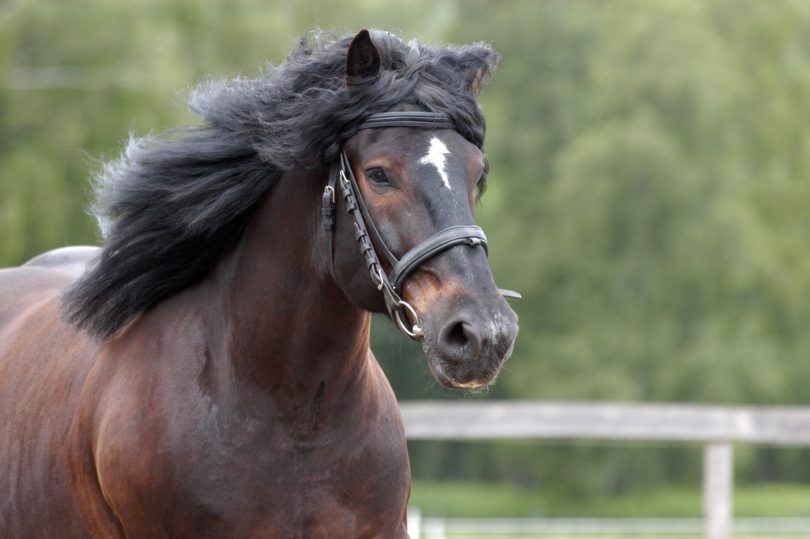
Final Thoughts
Noriker horses are a beautiful and unique horse breed found in many beautiful coat colors and patterns. If you’re interested in rare breed conservation, you’ll have difficulty finding Norikers outside of Austria and Italy. But the highly motivated horse keeper will stop at nothing to add a new animal to their herd, so it’s not entirely impossible.
They make fantastic family horses thanks to their pleasant temperament, but their hardworking demeanor makes them perfect for farm work and trail riding. Whether you need a driving horse, family pet, or workhorse, this breed can do it all.
Featured Image Credit: Dietmar.7, Shutterstock



